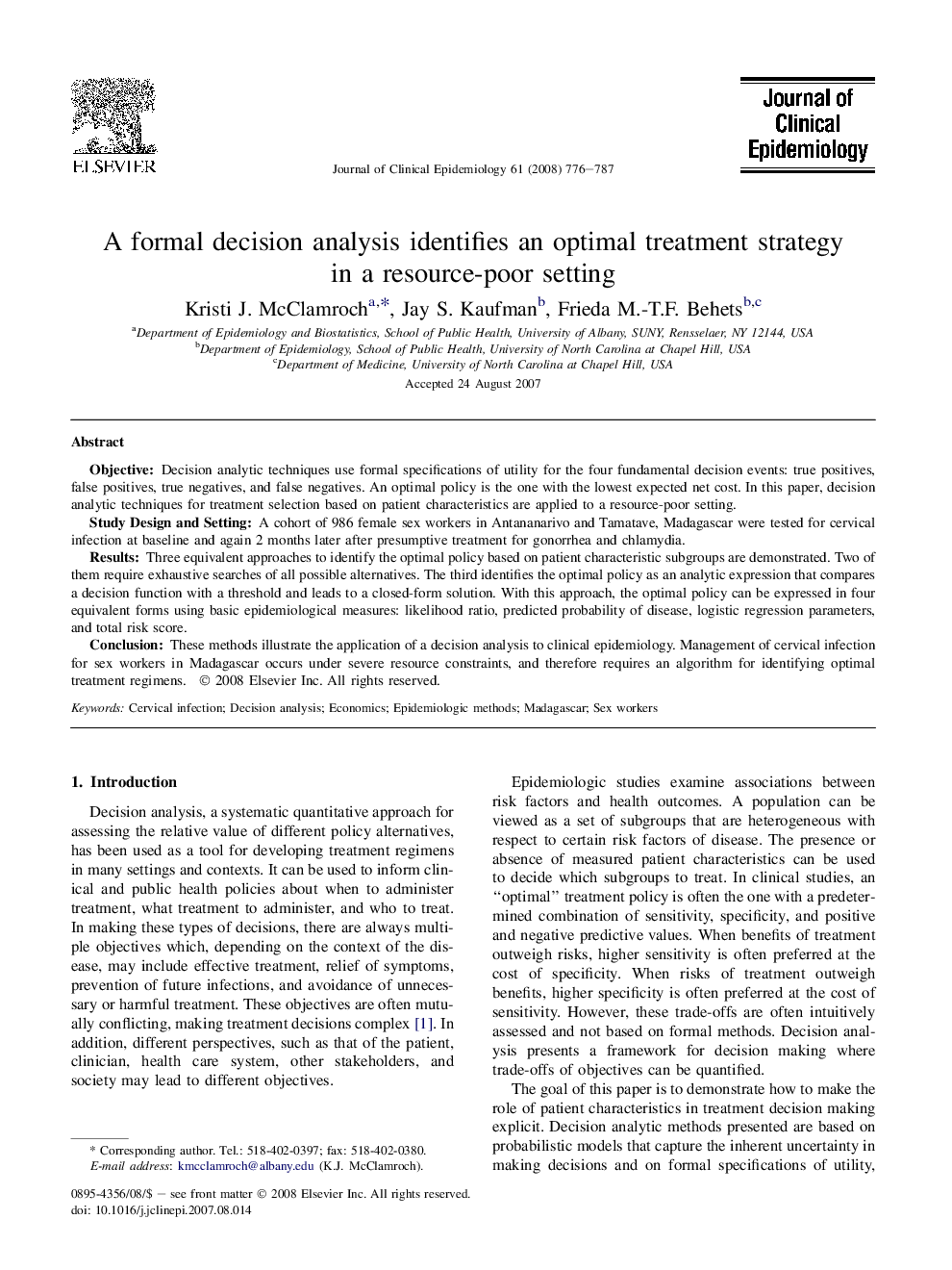| Article ID | Journal | Published Year | Pages | File Type |
|---|---|---|---|---|
| 1083611 | Journal of Clinical Epidemiology | 2008 | 12 Pages |
ObjectiveDecision analytic techniques use formal specifications of utility for the four fundamental decision events: true positives, false positives, true negatives, and false negatives. An optimal policy is the one with the lowest expected net cost. In this paper, decision analytic techniques for treatment selection based on patient characteristics are applied to a resource-poor setting.Study Design and SettingA cohort of 986 female sex workers in Antananarivo and Tamatave, Madagascar were tested for cervical infection at baseline and again 2 months later after presumptive treatment for gonorrhea and chlamydia.ResultsThree equivalent approaches to identify the optimal policy based on patient characteristic subgroups are demonstrated. Two of them require exhaustive searches of all possible alternatives. The third identifies the optimal policy as an analytic expression that compares a decision function with a threshold and leads to a closed-form solution. With this approach, the optimal policy can be expressed in four equivalent forms using basic epidemiological measures: likelihood ratio, predicted probability of disease, logistic regression parameters, and total risk score.ConclusionThese methods illustrate the application of a decision analysis to clinical epidemiology. Management of cervical infection for sex workers in Madagascar occurs under severe resource constraints, and therefore requires an algorithm for identifying optimal treatment regimens.
